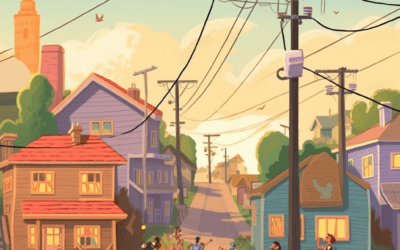Daylight Saving Time: Why do we “fall back” in autumn?
Introduction
Daylight Saving Time (DST) is the practice of adjusting our clocks forward or backward by an hour in order to make better use of daylight during certain months of the year. In autumn, we “fall back” by setting our clocks back by one hour. But have you ever wondered why we do this? Let’s find out!
The Purpose of Daylight Saving Time
Daylight Saving Time was first introduced to save energy and make better use of the longer daylight hours during the warmer months. By moving the clocks forward in spring, we can enjoy extended evenings with more natural light. This reduces the need for artificial lighting, saving electricity and lowering energy consumption.
The Origins of “Falling Back”
The idea of “falling back” in autumn by setting the clocks back one hour can be traced back to the early 20th century. The primary goal was to make mornings brighter during the winter months when the days are shorter. By moving the clocks back in autumn, we gain an extra hour of daylight in the morning.
The Benefits of “Falling Back”
1. Sleep and Rest
“Falling back” can be beneficial for our sleep patterns. With the additional hour in the morning, we can wake up feeling more refreshed and well-rested. This extra hour can provide a boost to our overall quality of sleep.
2. Safety and Visibility
By having brighter mornings, “falling back” enhances safety, particularly for morning commutes to school or work. Increased visibility makes it easier for pedestrians, cyclists, and drivers to see each other, reducing the risk of accidents.
3. Enjoying Natural Light
“Falling back” enables us to experience more natural light during the day. Natural light has numerous health benefits, including improved mood, increased vitamin D production, and better productivity and learning outcomes.
4. Conserving Energy
While “falling back” doesn’t directly save energy like “springing forward” does, it helps align our daily routines with the natural light patterns, encouraging energy efficiency. When our waking hours align with the daylight, we tend to rely less on artificial lighting sources.
Adjusting to “Falling Back”
When we “fall back” and set our clocks back by one hour, it can take a little time for our bodies to adjust to the new schedule. Here are some tips to help you adapt smoothly:
1. Gradual Adjustment
Start adjusting your bedtime a few days before the time change. Move your bedtime 10-15 minutes earlier each night to help your body adapt gradually.
2. Stick to a Routine
Maintain a consistent sleep schedule by going to bed and waking up at the same time. Following a routine helps regulate your internal body clock and promotes better sleep patterns.
3. Make Your Bedroom Sleep-Friendly
Create a sleep-friendly environment by keeping your bedroom cool, quiet, and dark. Consider using blackout curtains if morning light becomes a disturbance.
4. Limit Electronic Device Use
Avoid using electronic devices, such as smartphones or tablets, before bedtime. The blue light emitted by these devices can interfere with your sleep quality.
Conclusion
Daylight Saving Time is a practice designed to make better use of daylight and save energy. In autumn, we “fall back” by setting our clocks back one hour, providing us with brighter mornings and giving us more time to enjoy natural light. “Falling back” has various benefits, including improved sleep, enhanced safety, and the opportunity to make better use of the daylight hours. By following some adjustment tips, we can smoothly transition into the “fall back” schedule and make the most of the changing seasons.












